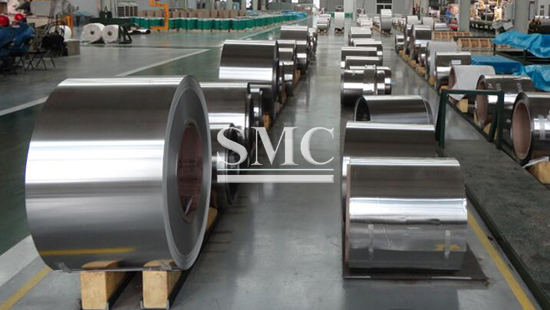
- Company overview The heart of SMC Vision & Philsophy Partnership Certifications Company culture
- Our service Design and Engineering Maintenance and Service Examine Production Line Upgrade and Transformation Storage and Logistics Processing, Trading and Distributor
- Management Our history Global responsibility Info Center
- Procurement center Internship
- Metal Steel Products Stainless Steel Products Aluminum Products Copper Products Galvanized Steel and PPGI Special Alloy Building Material
- Containers ISO Standard Container Equipment Container Storage Container Refrigerated/Reefer Container Offshore Container Container House Tank Container Container Fittings Container Trailer
- Gas Cylinder & Fire Extinguisher Cryogenic Liquid Cylinder Oxygen Gas Cylinder Storage Tank CNG Gas Cylinder LPG Gas Cylinder Hydrogen Gas Cylinder Nitrogen Gas Cylinder Industry Gas Cylinder Fire Extinguisher
- Metal Machinery Forming Machine Cutting Machine Processing Machine Bending Machine Block Machine Other Machinery Motor Spare Parts
- Mechanical Products Miscellany Mooring Equipment Marine Equipment Vehicle Industry Pressure Vessel Conveyor Belt Laser Equipment Bearing
- Electrical System Power Distribution Automation Electrical Cable Solar Power System Electric Protection System Transformer Production Line Lighting System
- Project Plastic Pipes and Pipe Fittings Fiberglass Reinforced Plastic Pontoon System
Stainless Steel Variety Attribute
1. Definition and characteristics of stainless steel
Stainless steel refers to a high-alloy steel that resists corrosion in air or chemically corrosive media. Stainless steel is used as a short for stainless acid-resistant steel in the professional field. In practical applications, steel that is resistant to weak corrosive media is often referred to as stainless steel, while steel that is resistant to chemical media is referred to as acid-resistant steel. Due to the difference in chemical composition between the two, the former is not necessarily resistant to chemical media corrosion, while the latter is generally rust-resistant. The corrosion resistance of stainless steel depends on the alloying elements contained in the steel. The term “stainless steel” refers not only to a single type of stainless steel, but to more than one hundred industrial stainless steels, each of which has been developed for its specific application.
From the basic elements contained in stainless steel, the Cr content should exceed 10.5% wt (ie, weight ratio), the C content should be less than 1.2% wt, and the iron content should exceed any other elements. From the perspective of metallography, since the stainless steel contains chromium, a very thin chromium film (Cr2O3) is formed on the surface of the stainless steel, thereby isolating the oxygen in the air to achieve the purpose of not rusting. Therefore, chromium is the cornerstone of stainless steel because it forms a protective oxide film. Stainless steel is usually sold in the form of stainless steel hot rolling and cold rolling in the market circulation process. The hot-rolling of stainless steel is based on slabs (mainly continuous casting billets), which are heated to form strips from roughing mills and finishing mills. Cooled by laminar flow to set temperature, coiled into coiled steel coil by coiler, cooled steel coil, according to different needs of users, through different finishing lines (flattening, straightening, crosscutting or slitting) , inspection, weighing, packaging and marking, etc.) processing into steel, flat rolls and slitting steel strip products.
Cold rolling of stainless steel is based on hot-rolled steel coils, which are acid-washed to remove scale and then cold-rolled to obtain stainless steel cold-rolled products. Cold rolled products are hard, 1/4 hard, 1/8 hard, and annealed. Due to the cold rolling of hot rolling through continuous cold deformation, the mechanical properties are relatively poor and the hardness is too high. Usually, in order to meet the performance requirements, the steel coil is annealed after cold rolling, so that the grain structure of the steel is recovered and satisfied. Late user requirements for stretch stamping.

2. Classification and use of stainless steel
The classification of stainless steel is very diverse, the main classifications are listed below:
First, according to the metallographic organization, it can be divided into five categories, namely austenitic stainless steel, martensitic stainless steel, ferritic stainless steel, duplex stainless steel and precipitation hardened stainless steel.
Second, according to chemical composition, it is mainly divided into chromium (400 series), chromium nickel (300 series) and chromium nickel manganese nitrogen (200 series, also known as manganese stainless steel), of which 400 can be divided into Steel types such as 430, 409L, 410, 410S, and 420; 300 series can also be divided into 304, 316L, 321, and 301; 200 series can also be divided into 201, 202, 205, J1, J2, J5, and the like.
Third, according to the functional classification of steel, it can be divided into low temperature stainless steel, heat resistant stainless steel, wear resistant stainless steel, non-magnetic stainless steel, free cutting stainless steel and superplastic stainless steel.
3. Stainless steel trade pricing method
The difference between the actual thickness of stainless steel and the theoretical thickness is called the tolerance. In the spot trading of stainless steel industry, traders usually purchase the whole volume of the steel mill for the volume of the coil. When selling to the downstream, the downstream customers usually have the demand for flattening, and the cold rolled sheet after the flattening is sold by volume. In the case of meeting the thickness specifications, a small amount of negative tolerance products (ie, the actual thickness is lower than the theoretical thickness) is lighter in weight and has a lower purchase price in pounds, so it is more favored by traders and has a higher market circulation.
In summary, stainless steel cold rolling is based on hot-rolled steel coils, which are acid-washed to remove scale and then cold-rolled. After annealing, stainless steel cold-rolled products are obtained. Mainly used in home appliances, tableware, kitchen utensils, water heaters, boilers, food machinery and other products.
For more information, please visit:https://shanghaimetal.com/StainlessSteelProducts-41.html
For our full list of products that we offer check out our website here. Be sure to join the conversation in our LinkedIn group, Facebook, Twitter.
Try also our We Chat by scanning the QR code below.
Shanghai Metal Corporation is a trusted aluminum alloy, aluminum foil price, stainless steel price and stainless steel manufacturer, kinds of stainless steel in china.
Sunny Y.//SMC Editor

